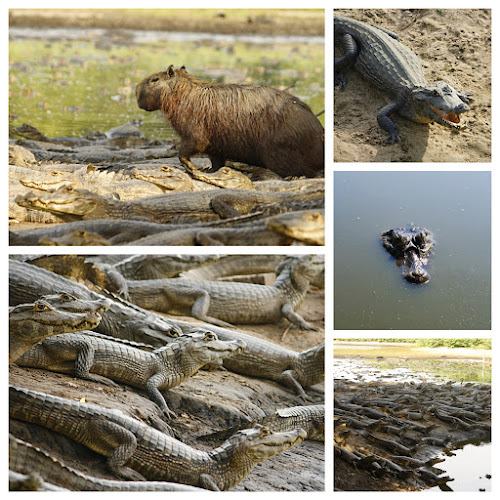From the hassle and bustle of the concrete jungles to the inner depths of a real Brazilian jungle. No not quite the Amazon, but the vast natural paradise that is the Pantanal. One of Brazil's largest ecological attraction (but also crosses into Bolivia and Paraguay), the Pantanal, covers 230,000 sq km and contains up to 650 bird species and 80 mammals, including the worlds largest rodent, the capybara.
So from Rio we travelled west, 21hrs by bus, to Campo Grande. A sizable city which is the main gateway to the Pantanal and also host to the 3rd largest Japanese community in Brazil. The accommodation we chose was Hostel Campo Grand, ultimately because our Pantanal tour with Ecological Expedition included a free night there. The room was basic and fairly clean, and whilst there was no aircon it did have a fan with 2 settings baby whisper and jet engine. After a quick inclusive breakfast we travelled a further 3 hours to the drop off point (not much more than a dusty bus stop with old tyres as chairs) where we changed from our small minivan to a rusty old F100 pickup with next to no interior left and required the jaws of life to open the doors. From here the tour began...
We drove approximately another 2 hours, stopping along the way to spot wildlife. There was all sorts of birds, from stalks to turkeys, eagles, hawks and even toucans, some of the mammals included small little rodents, buffalo, deer and as mentioned before capybara. But the most impressive of all was the caiman, which is similar to a small alligator, and whilst poaching these animals is a big business there numbers are still in the millions.
The accommodation on the tour was quite nice, a large (seemed newly built) 3 story house with numerous double rooms and shared accommodation options on the second level. Downstairs was the kitchen and communal dinning and drinking area (which we may of partaken in). There was also some comfy outdoor chairs which over looked Rio Paraguai, a great place to sit back and watch the moon rise over the vast wilderness. (Fun fact: this river not only houses some amazing wildlife but is also used as the main transportation of iron ore from Bolivia).
Throughout the four days there we were kept busy with a range of activities, a night boat ride spotting some of the mystical nocturnal creatures, along and in the banks of the river, a morning boat ride which also included more animal spotting and a trek through some of the shallower wet lands in hope of spotting some anaconda (unfortunately they avaided us this time), more tracking though some of the dryer parts of the jungle, horse back riding (which I was really.... thrilled about) and lastly (and my favorite) paraina fishing.
Equipped with our bamboo pole, rusty hooks and what was either last nights dinner or just some old cooked beef we were dropped down stream on a small muddy bank. With a quick lesson on how to cast, which was basically just fling the sharp bit out into the river and then splash the tip of the pole in the water and "when you get nibble pull up", we were on our own. As the hot afternoon sun belted down on us, we assumed we were going to be in for a draining afternoon of slow and tedious fishing. However almost as quick as our sinkers hit the bottom the bites began and after a some premature jerking of the rods (excuse the pun) we finally go the hang of it and in came the parainias. Even though most of the fish caught was presumably under the legal limit (if one even exists for paraina) there were all kept and fried up for us that night. As for taste I would have to say that they were a little meatier than other fish I have had.
Overall our time in the Pantanal was very enjoyable, Ecological Expedition put on a good show considering its a budget tour.





No comments:
Post a Comment